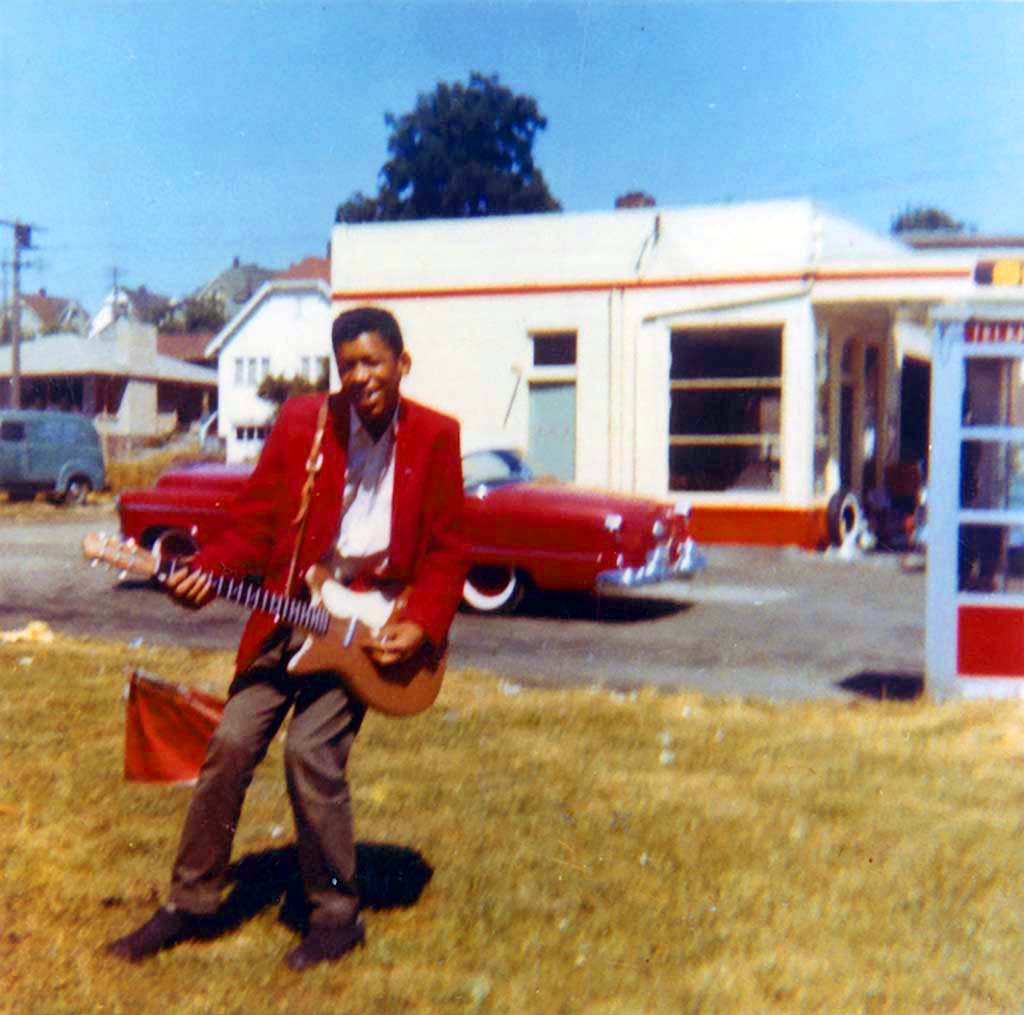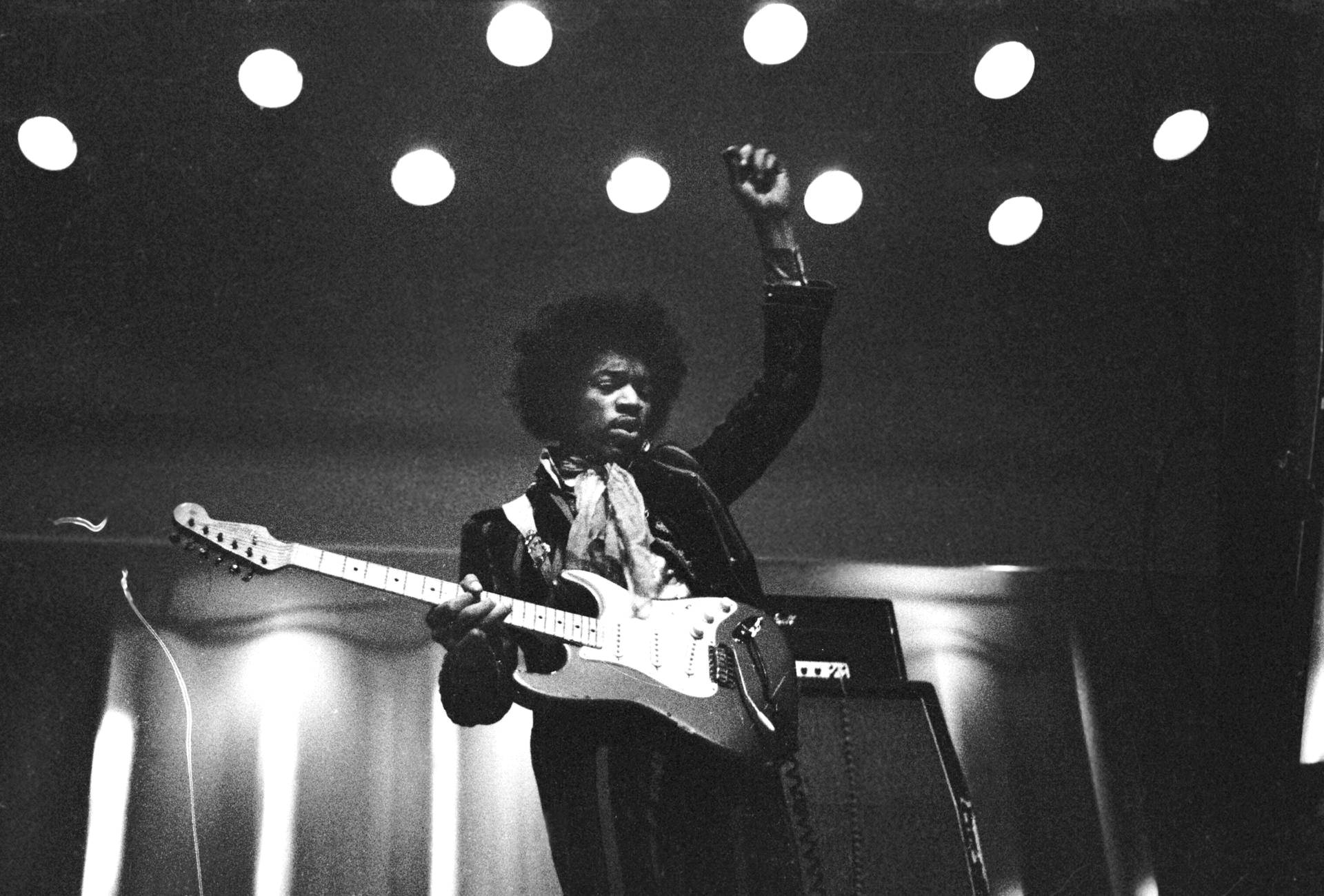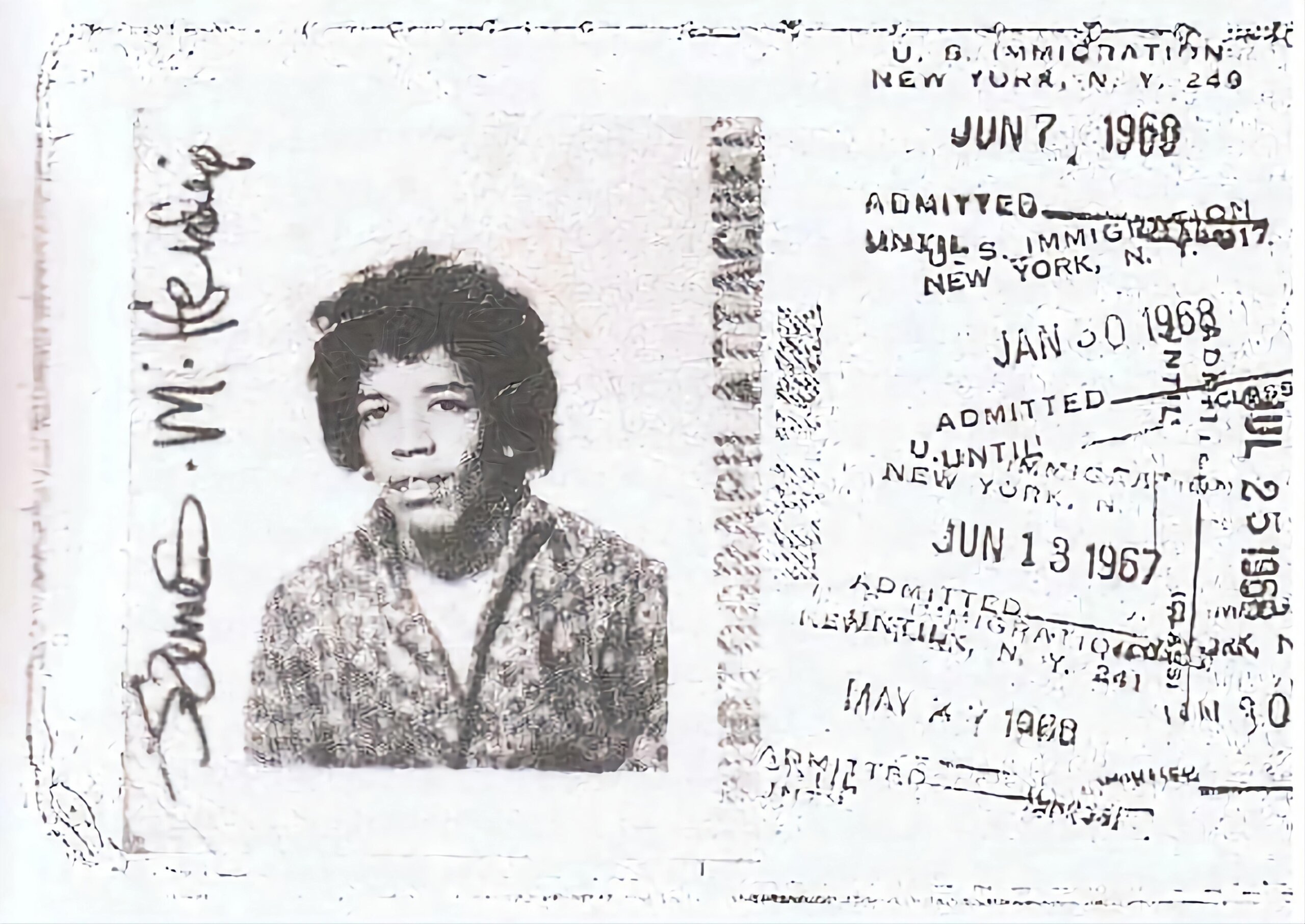The resurgence of “peace and love” aesthetics in menswear today owes itself to the rebellious spirit of the 1960s and 70s, embodied by musician Jimi Hendrix.
In the spring of 1969, just a year before his death, Jimi Hendrix ascended onto a stage at Madison Square Avenue to entertain thousands of adoring fans.
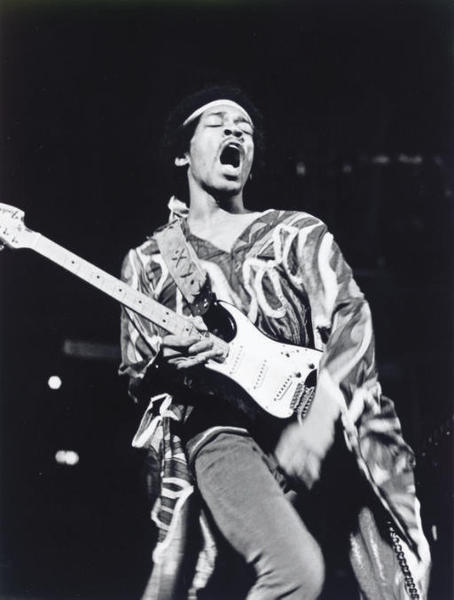
Jimi Hendrix from UCLA archive.
He was dressed in his usual romantic manner: purple rayon bellbottom trousers paired with a matching vest, which he layered over a baby blue chiffon shirt that had ruffles dripping down his neckline and sleeves. With a guitar in his hands, he spoke plainly into the microphone between sets: “I’d like to dedicate this one to Michael and Toni.” It may have been the only time a rockstar has dedicated a performance to his tailor.
The Rock and Roll Hall of Fame posthumously described Hendrix as “arguably the greatest instrumentalist in the history of rock music.” It is unfortunate, then, that his skill was only appreciated for a few short years before his young life came to an end.
Hendrix was born in Seattle, Washington during the final years of the Second World War, abandoned by his alcoholic mother Lucille, and raised by his single father Al. Al struggled to find consistent work in a segregated America, remembering: “You’d see a job advertised in the paper, go down and apply, and they’d say, ‘It’s just been taken.’ Two or three days later, it’d still be in the paper.” So he was left working a variety of odd jobs—clearing brush, recycling scrap metal, and laboring in the shipping department at Bethlehem Steel. Al eventually saved enough to buy a home, but lost it when he failed to make payments, therefore forcing his family to live in one unstable situation after another. At one point, they took up residence in an apartment so infested with cockroaches, they tried not to keep any food at home.
Despite having little, Al did what he could to provide for his son. There’s a photo of young Jimi Hendrix in 1958—the same year alcoholism cruelly took his mother’s life—that shows the teen standing knock-kneed outside what appears to be a petrol station. He’s holding a brown-and-white electric guitar while dressed in an oversized, cherry red sport coat, white dress shirt, and slim, mushroom brown trousers. The smile on his face suggests he feel transported to a better world. A year later, Al purchased Jimi a brand new all-white Supro Ozark from Myers Music in Seattle. This guitar was purchased on credit and then stolen from Jimi about a year later when he played at a show, leading to Al replacing it once he gathered enough funds. These two purchases set the foundation for a singular rock talent whose name would become synonymous with musical virtuosity.
Jimi was an incorrigible rebel. At age 19, he was forced to join the military after being twice caught riding in stolen vehicles. His platoon sergeant, James C. Spears, was unimpressed with his performance, as Jimi was frequently discovered sleeping or strumming his guitar when he was scheduled to be on duty. “He has no interest whatsoever in the Army,” Spears wrote in a report. After being honorably discharged, Jimi returned to music, playing low-paying gigs at obscure venues in Nashville until he grew frustrated with having to abide by the rules established by his bandleaders. So he broke off on his own, relocated to Harlem, and soon was playing behind pros such as Little Richard, King Curtis, and the Isley Brothers. But when he and Richard clashed over his tardiness, clothes, and stage antics, even that work finally dried out. Richard’s brother Robert kicked him out of the group around the summer of 1965.
For those years, Hendrix harbored little affection. “We’d get a gig once every twelfth of never,” he recalled in a 1967 interview. “We even tried eating orange peel and tomato paste. Sleeping outside them tall tenements was hell. Rats running all across your chest, cockroaches stealing your last candy bar out of your pocket . . . ”
Still, he maintained his faith and privately wrote to his father:
“I just wanted to let you know I'm still here, trying to make it. Although I don't eat every day, everything's going alright for me. It could be worse than this, but I'm going to keep hustling and scuffling until I get things to happening like they're supposed to for me.”
God must have intercepted that letter, as Jimi landed a gig at the popular Manhattan hot spot Cheetah Club shortly afterward. Linda Keith, then-girlfriend of Rolling Stones guitarist Keith Richards, visited that evening and was so enthralled by Hendrix’s performance that she persuaded The Animals’ original bassist Chas Chandler to see him. Inspired by Hendrix’s brilliance as well, Chandler flew him to London, drafted a contract, and helped create The Jimi Hendrix Experience. “I’m in England, Dad. I met some people, and they’re going to make me a big star,” he told his father over the phone shortly after arriving. “We changed my name to J-I-M-I.” Within months, the band had three of UK’s top ten hits—“Hey Joe,” “Purple Haze,” and “The Wind Cries Mary”—creating the soundtrack for a blooming countercultural movement.
•• ━━━━━ ••●•• ━━━━━ ••
In the 19th century, French poet Charles Baudelaire observed that fashion is more than a frivolity; it’s a form of expression that reflects the spirit of an age.
During the post-war years, America’s social, cultural and generational divide could be read off the backs of people on the street. On one side, there were those Americans who, after returning from fighting in the trenches of Europe, were afforded a free college education through the GI Bill (also known as the Servicemen’s Readjustment Act of 1944). Through this socialization process, many in this group adopted bourgeoisie mores and became some version of Gregory Peck in the 1956 film “The Man in the Gray Flannel Suit.” They worked corporate jobs, raised families behind white picket fences, and wore sack suits with button-down collars and rep striped ties.
Conversely, there was the American underclass dressed in chambray shirts, work boots and motorcycle jackets, as well as a burgeoning countercultural movement of anti-authoritarian youths disillusioned by the system. These youths—concerned with love, war, religion, racism, and drugs—scoured secondary markets and old junk shops, looking for unusual pieces to create layered outfits that challenged the hegemony of traditional Western aesthetics. They wore Cowichan knits, yellow cotton muslin kaftans, woven floral ponchos, Navajo beadwork and purple shot silk waistcoats embellished with paisley embroidery. The look combined Western clothing with traditional garb from Afghan, Indian, Moroccan, Tibetan and Native American cultures, all mixed together with the power of psychedelics.
When Hendrix played for The Isley Brothers and Little Richard in the mid-1960s, he typically wore conventional suits; but when free from bandleaders, he was more flamboyant. His passport photo, issued in September 1966 when he was still a starving musician, shows him in a floral shirt with long collar points sweeping back over his shoulders. Once he formed The Jimi Hendrix Experience, he spent some of his newfound riches on black velvet jackets trimmed with ornate gold braiding, Afghan waistcoats, wispy silk neckerchiefs, Asian brocade jackets, and feathered floppy hats. At one point, while touring with the band Vanilla Fudge, he asked his tour-mates where they got their unusual clothes. “Our friend in Florida made them,” one of the members said. That’s how Hendrix met a lanky custom clothier named Michael Braun.
Hendrix started with a pair of ready-made pants from Braun, and enjoyed wearing them so much, he made the tailor the architect of his style. He bought bespoke ruffled shirts, cyan sets with a Japanese-style wrap-over front, fur vests, and jackets with wing-liked sleeves. Braun said the musician enjoyed wearing velvet pants, large flowing collars, and “sticky type buttons” (Hendrix’s charming term for Velcro). In a letter, Hendrix ordered “a white suit, maybe purple, or a fine black fur suit,” and suggested that Braun try adding stones and jewelry to the vest and trousers. Eventually, Hendrix fully entrusted his tailor and ordered omakase-style. “Any other things you may run across, please don’t hesitate to take and make something—anything to your fancy—so long as it’s specially made as art.”
Roger Burton writes in his book “Rebel Threads” that Hendrix helped to popularize the “flower power” look. “Not only did he bring with him his unique brand of amazing music, but also a fantastically eclectic sense dress sense that would inspire a mass of new followers.” Hendrix’s hallucinogenic music and stage tricks—such as playing the guitar behind his head or with his teeth—added another dimension of meaning and potency to this bohemian style. “Kids everywhere cast off their dismal old clothes and wore coats of many colors,” Burton recalled. “Indian jewelry, beads and bells were in abundance. Henna was applied to hair and decorated with flowers, heavy kohl make-up became popular, and body painting reached an all-time high. Countless thousands reveled in the powerful messages of peace, and ‘make love, not war.’”
The style angered parents, who disparagingly called these youths “longhairs,” but this only made the clothes more appealing to young people.
In September 1970, just three years after the release of his debut album, Jimi Hendrix was tragically found unresponsive at The Samarkand Hotel in London. The coroner ruled that he aspirated his own vomit and died of asphyxia while intoxicated with barbiturates. “Rockstar Jimi Hendrix Dead at 27,” read the papers.
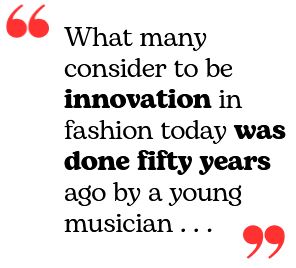 It’s often said that America has not been this divided since the Civil War, but a better comparison would be the 1960s and 70s. Today’s polarization, racial politics and debates around gender, sexuality and abortion retain faint echos from those turbulent decades. As Baudelaire once pointed out, dress is often a reflection of the age, so it’s no surprise that 1970s aesthetics have also roared back into menswear: Alessandro Michele’s maximalist creations during his time as creative director at Gucci, the “peace and love” look of niche brands such as Story MFG., and the blurring of gender lines in dress all feel reminiscent of an earlier era when people challenged the establishment.
It’s often said that America has not been this divided since the Civil War, but a better comparison would be the 1960s and 70s. Today’s polarization, racial politics and debates around gender, sexuality and abortion retain faint echos from those turbulent decades. As Baudelaire once pointed out, dress is often a reflection of the age, so it’s no surprise that 1970s aesthetics have also roared back into menswear: Alessandro Michele’s maximalist creations during his time as creative director at Gucci, the “peace and love” look of niche brands such as Story MFG., and the blurring of gender lines in dress all feel reminiscent of an earlier era when people challenged the establishment.
What many consider to be innovation in fashion today was done 50 years ago by a young musician whose personal gentleness and dramatic power as a guitarist made him a generational icon—and he often wore the styles better.
The views and opinions expressed in this article are those of the writer.


